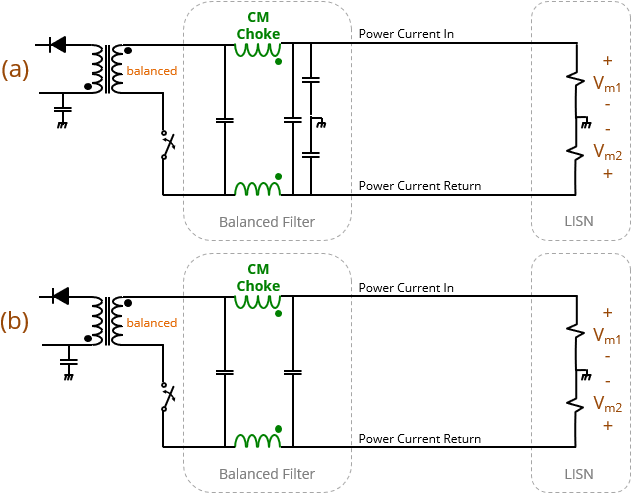EMC Question of the Week: August 4, 2025

Which of the following curves in the datasheet of a common-mode choke is the most helpful for predicting the performance of the choke in an actual product?
- attenuation vs. frequency
- impedance magnitude vs. frequency
- complex impedance vs. frequency
- complex core permeability vs. frequency
Answer
The best answer is “c.” The complex common-mode impedance [R(ω) + jY(ω)] is the only parameter that can be used in a model to evaluate how well the choke will perform in an actual system. At radiated emissions frequencies, the performance of the choke is largely determined by the core losses, R(ω). Without knowing (or being able to estimate) this value, it is difficult to know whether or not the choke will be effective.
The attenuation vs. frequency curve in the datasheets is almost meaningless and often misleading. These curves are typically measured in a 50-Ω system. Presenting the magnitude of the attenuation without the phase information makes it impossible to use these results to model the choke performance in systems with different source and load impedances. In real applications, the common-mode source and/or load impedance is almost always dominated by its reactance (i.e., it's a capacitance or inductance). The attenuation achieved in real systems bears little resemblance to the attenuation achieved in a 50-Ω system.
The impedance magnitude vs. frequency is a little more helpful but doesn't convey enough information to model the behavior of the choke. The reactive part of the impedance (inductance or capacitance) shifts the resonant frequencies of the common-mode current without necessarily reducing its amplitude. For meeting EMC requirements, the resistive part of the impedance needs to be significant. Generally, impedance curves with sharp well-defined peaks have insufficient resistance. Impedance curves that are broader and flatter are usually preferred. However, without knowing the complex impedance of the choke, it's performance in an actual system can't be modeled.
Finally, the complex permeability of the core material (μ' - jμ") is important. The μ" is responsible for high-frequency core loss. However, this information is rarely (if ever) included in the datasheet for a common-mode choke. And even if it were, it would only be helpful if we used that information (along with information about the choke geometry) to determine the complex impedance of the choke vs. frequency.
Note: Some suppliers of common-mode chokes do not provide information on the complex impedance of their products. In this case, it is necessary to obtain SPICE models or S-parameter data in order to model these components in typical systems. Design decisions should not be based on datasheet information that hides important design parameters. If you don't find the information you need to model a common-mode choke in the datasheet, a reputable supplier should be happy to provide it.
Have a comment or question regarding this solution? We'd like to hear from you. Email us at
